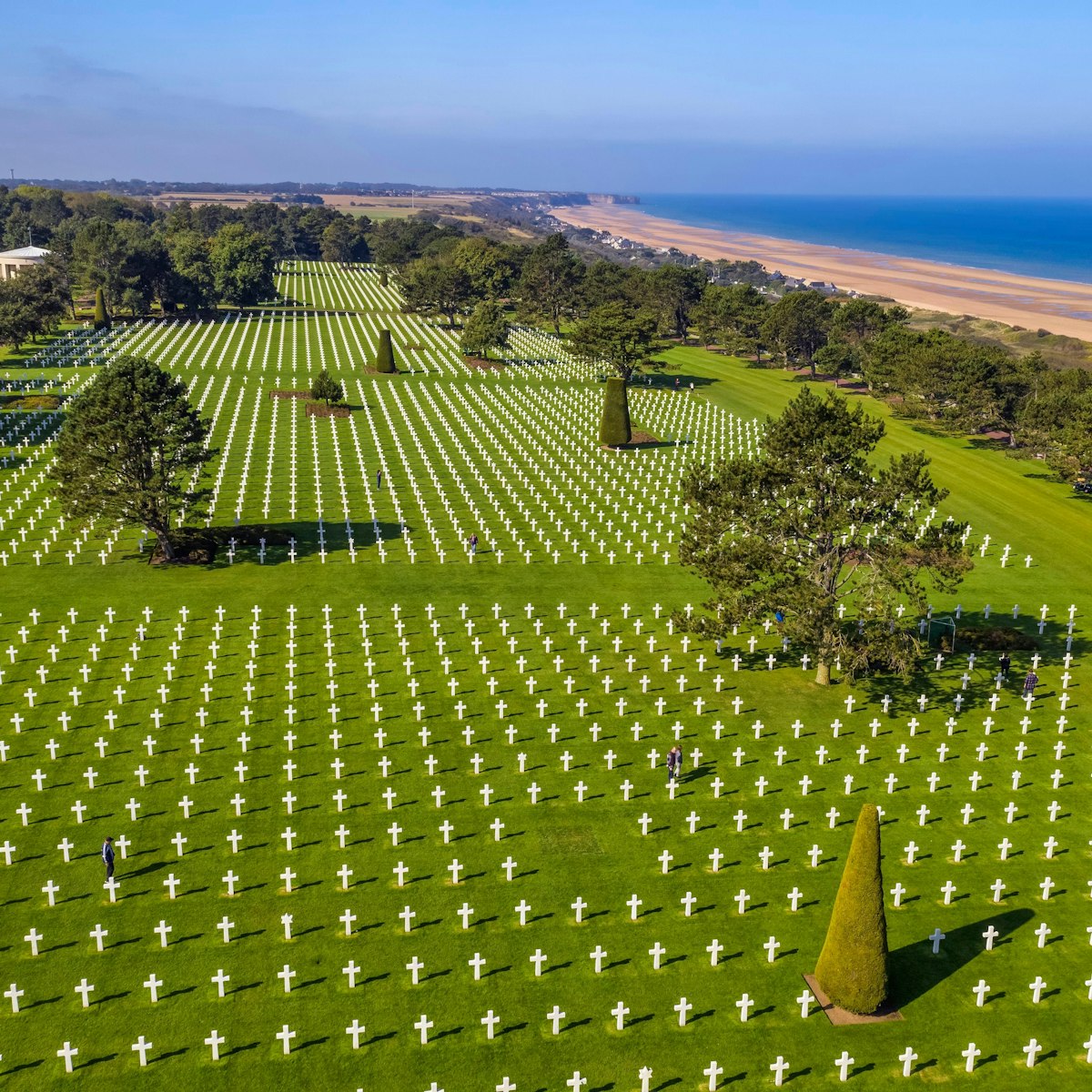The world’s most celebrated embroidery depicts the conquest of England by William the Conqueror in 1066 from an unashamedly Norman perspective. Commissioned by Bishop Odo of Bayeux, William’s half-brother, for the opening of Bayeux’ cathedral in 1077, the well-preserved cartoon strip tells the dramatic, bloody tale with verve and vividness as well as some astonishing artistry. Particularly incredible are its length – nearly 70m long – and fine attention to detail.
Fifty-eight action-packed scenes of pageantry and mayhem occupy the centre of the canvas, while religious allegories and illustrations of everyday 11th-century life, some of them bawdy and naughty, adorn the borders. The final showdown at the Battle of Hastings is depicted in graphic fashion, complete with severed limbs and decapitated heads (along the bottom of scene 52). Halley’s Comet, which blazed across the sky in 1066, appears in scene 32.
A 16-minute film gives the conquest historical, political and cultural context, including crucial details on the grooming habits of Norman and Saxon knights. Also well worth a listen is the lucid and highly informative panel-by-panel audioguide, available in 14 languages. A special audioguide for kids aged seven to 12 is available in French and English.
A joint ticket for admission to the Bayeux Tapestry and Musée Mémorial de la Bataille de Normandie or Musée d’Art et d’Histoire Baron Gérard is €12 (or €15 for all three).







